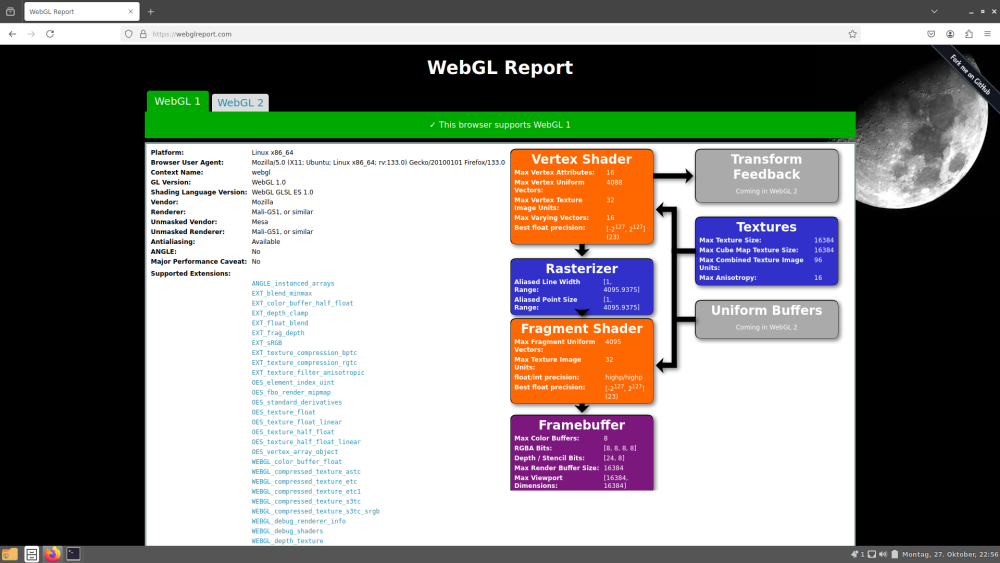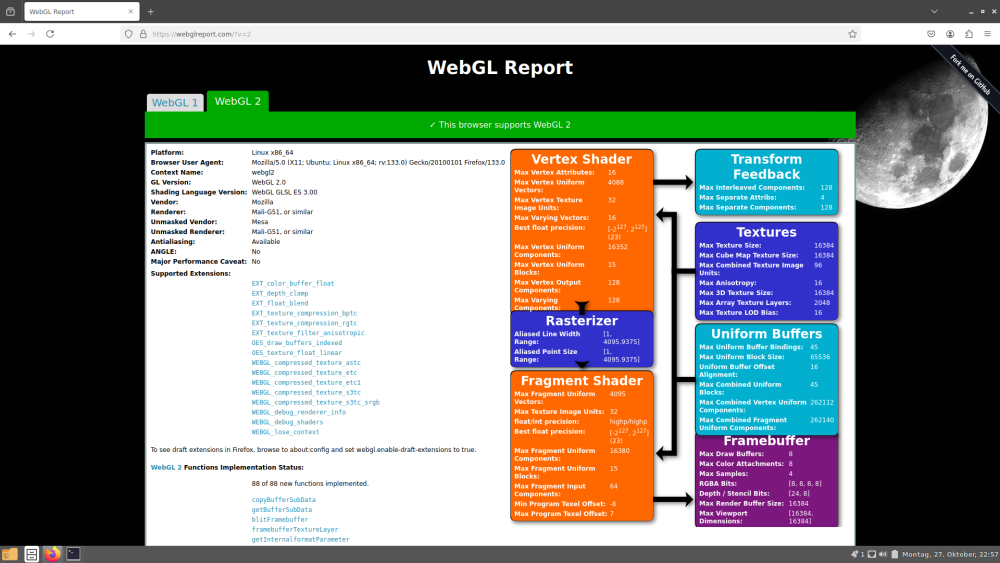
Jojo
Members-
Posts
33 -
Joined
-
Last visited
Recent Profile Visitors
The recent visitors block is disabled and is not being shown to other users.
-
In the meantime I got HDMI also working through my AVR. I just changed the cable and that did the trick... One thing to mention: the system seems to be allergic to hot-plugging the HDMI cable. So if I connect/reconnect the cable during runtime, the HDMI output will be gone. It requires a reboot WITH CABLE CONNECTED. Not a big issue from my pov, but important to know...
-
Awesome! Thank you for adding it!
-
Good to hear that it worked for you 👍. The PR on Github seems to be on a good way, so "official" support might be there soon...
-
Currently Noble Server is not planned. I have the impression, that generally speaking Debian is the way to go for server stuff while Ubuntu is more targeting Desktop systems (at least Armbian). Of course there might be cases where both are provided. All my small servers here at home run Debian-based systems. Never had any issues or disadvantages compared to Ubuntu... If you read through this thread, you'll see what is needed to build it on your own: - clone the Armbian repo - get the correct dts file and place it in the correct folder - get the correct csc file and place it in the correct folder - run the compile script and choose M1S from the list The files and where to place them can be found in the corresponding PR on github. If you don't get it running on your own just wait/hope a little bit for the board to be officially (community-)supported by Armbian. Or I share the pre-compiled image with you (on your own risk). Greetings
-
Tested another Armbian, this time Noble with Gnome desktop. Although I personally do not like that UI, It performs relatively good. As @Werner predicted, glmark2-es2-wayland finished with a score of 277. WebGL Aquarium demo works significantly better. While 500 fishes still result in very low FPS, 100 fishes is mostly fluent. What I observed on all systems I have tested on the M1S, armbian-config takes extremely long to load/open. Sometimes around 5 minutes or so. It would be interesting to know, if this is expected to be normal... Now that I have tested four different images (Bookworm server, Noble Server, Noble Cinnamon and Noble Gnome), all with "current" kernel (6.12), I feel okay to do the PR. As said, I did not do that much but only adding the .csc file and the .dts file. This gave me the feeling on the other hand, that your build framework is working really great and makes it "relatively easy" to contribute and test own things, as seen as one knows how the things play together. So apart from all my "complains", your build framework is great!👍 If there are still other M1S users around: Hi!
-
Okay, thanks for the explanation! So, I got Armbian compiled and running by just adding the .dts file and the .csc file. The .csc file is a copy of the ODROID M1 .config file, but with some modifications: I threw out the SPI-related stuff, because the M1S does not have a SPI flash to boot from and it gave me arrors during compilation. I tested basic functionality with a Ubuntu Noble Cinnamon desktop image as well as a headless server image. Is this enough to create a pull request? How is the Download page created? Is that made by the Armbian team or do I need to add it there as well (how?) ? Greetings
-
-
Understood, all good. That is a good example for something that is not that clear. I tried to find a ready-to-use dts file for the M1S in the mainline repo, but it is not one single dts file, but a composition of several files where one file refers to the next one and so on (here). I was confused and so I asked ChatGPT how to merge the mainline dts into Armbian. This was how my patches were created. After compilation there was indeed one single all-in-one dts file for my board but not before... EDIT: I just tried another build with just taking the top-level dts file from the mainline repo and placing it in the location you mentioned. Worked like a charm, despite my confusion... 😅 From my point of view it seemed better to have the patches in place to be sure to always pull the most recent DT from the mainline kernel (that of course would require a defined place to put those patches). But what you say sounds as if it would be preferable to have dts files instead of patches. Is that correct and why?
-
Thank you for your reply! No, I did not check THIS SPECIFIC PR. But of course the other ones, for example those @Igor already pointed to. And because of the fact, that I already checked several PR and still being not sure how to do it correctly, I hoped for a more general explanation than just another link to another PR... I wished for some explanations about good practice and how/why things are done the way they are done. "Path xyz is the place for your .csc files. Path abc for your .dts files because of blablabla..." That would just have been nice to get a better overview. Beside all the respect and appreciation that I have for you and your colleagues at Armbian, please understand that it is sometimes somewhat exhausting when guys like me try their very best to contribute and then often get calmed by link-drops... Anyway, I'll check out your referred PR and see if that helps.
-
I am currently trying to add the board support "the official way" by forking the repo and adding the board in the "Community maintained" category. To me it seems that this requires not "normal" .config files, but ".csc" files. This is fine and I created one accordingly. But I dont know where to place it. What would be the best place for that? Additionally, I have created a patch that pulled the latest DTS file for the M1S from the mainline kernel repo. That worked fine as well and after compilation there was a local DTS file created and everything worked so far. But here I have the same problem/question: where to put these patches? Or is it preferable to use the created DTS file and place that somwhere without the patches that pull the mainline DTS? So basically I wish for a little bit support where to put which files to be "Board support Rules" compliant. Greetings!
-
Good point! I was not aware of that. I will try today and report back.
-
Just compiled and flashed a Cinnamon desktop image. Boots fine Video over HDMI working. Audio over HDMI working. The video experience is not that much satisfying. There seems to be no graphic acceleration, yet. WebGL aquarium runs at 5 FPS with 500 fishes, 15 FPS with 100 fishes. Youtube videos are relatively laggy and you'll experience high CPU load. All the GPIO hardware stuff has not been tested, yet. No clue how to do it... Now I'd like to have some more people on board to support me by adding graphic acceleration and how to merge the M1S support now into the Armbian repo. Greetings. EDIT 1: transferring the OS from SD card do eMMC works by using armbian-install tool EDIT 2: graphic acceleration IS kind of working, glmar2-es2 gives me a score of ~177. But the web browser seems not to be accelerated. also the desktop environment seems to have problems Cinnamon is not able to load applets, which means that the "Start" menue icon is missing...
-
M.2 NVMe slot is also WORKING. At least the SSD gets detected with "cat /proc/partitions". It is not listed under "df -h" but I think this is because it is not mounted yet...
-
Okay. Thank you!
-
Okay, one step further: HDMI output is WORKING! initially I had the M1S connected to the Aux input of my AV receiver. There seems to be a problem with display detection (EDID, available modes) and so the M1S does not know which display mode to set. I then connected the M1S directly to an HDMI input of the TV and nothing changed. Rebooted and ... Surprise! Video output works, EDID information and available modes are available (wasn't when connected to AV receiver). So how can I tell Armbian to force a specific display mode even when no screen information is available?


